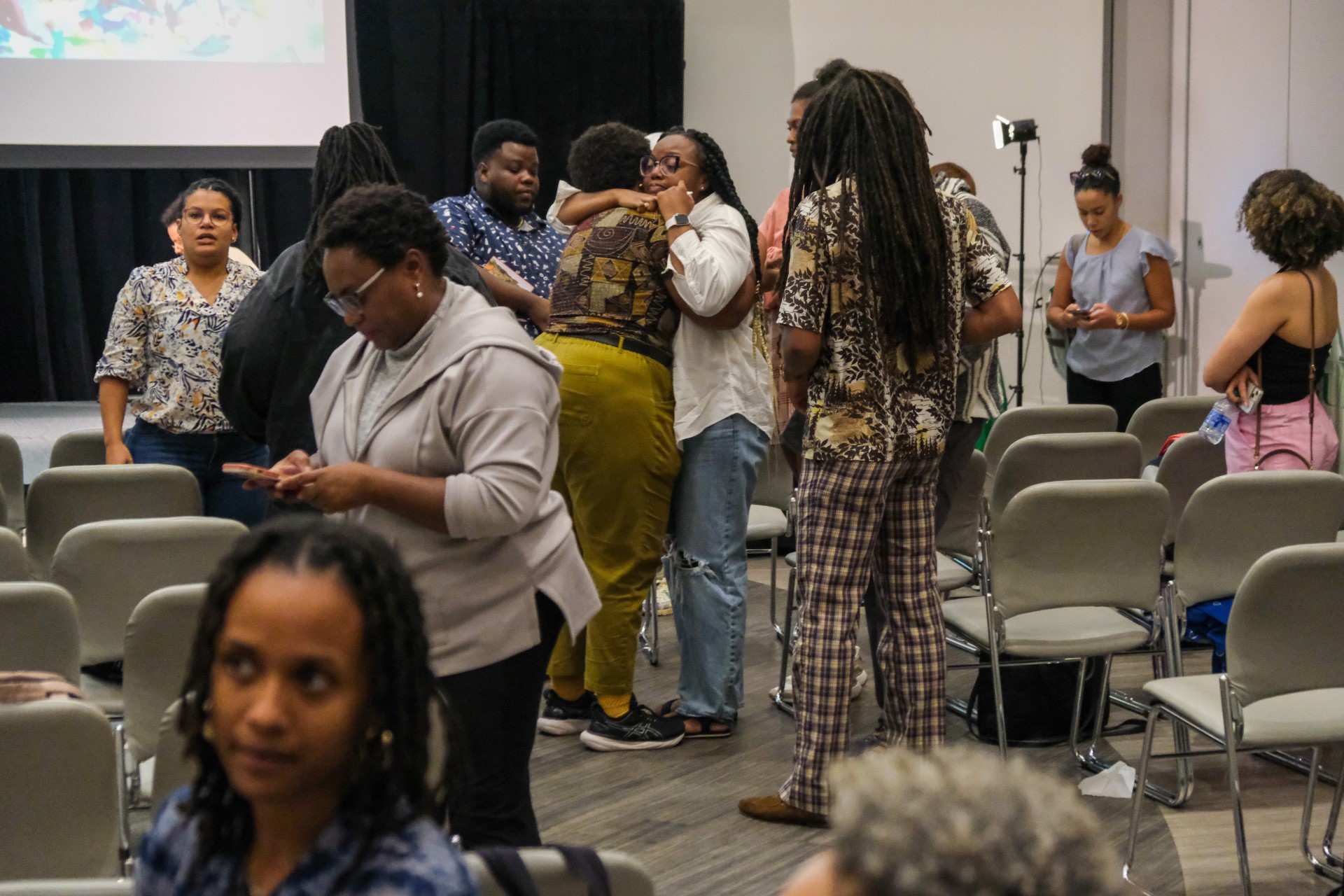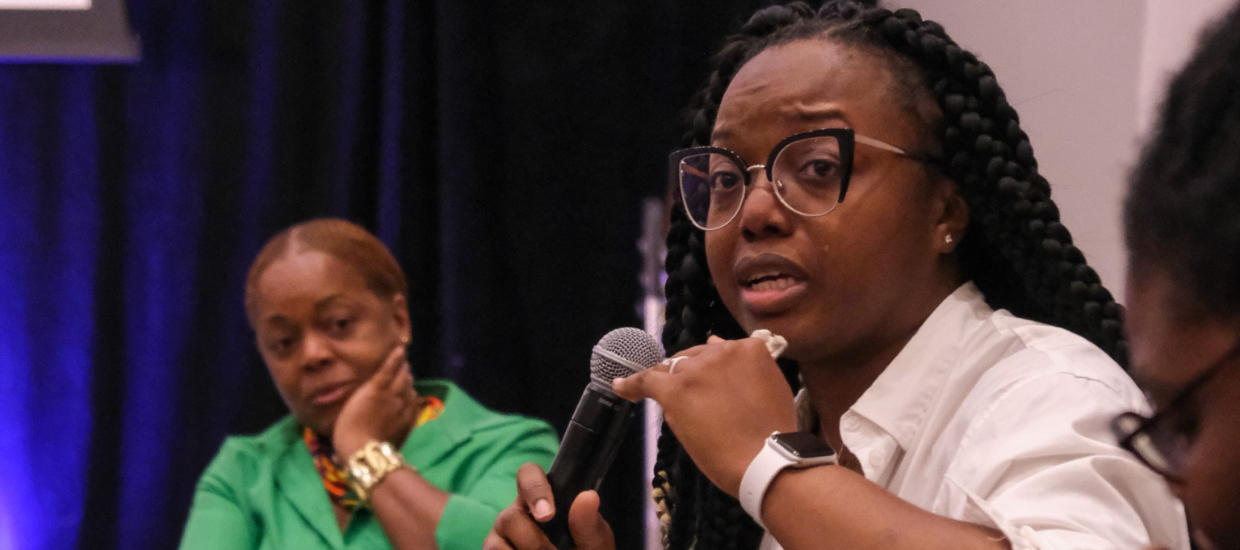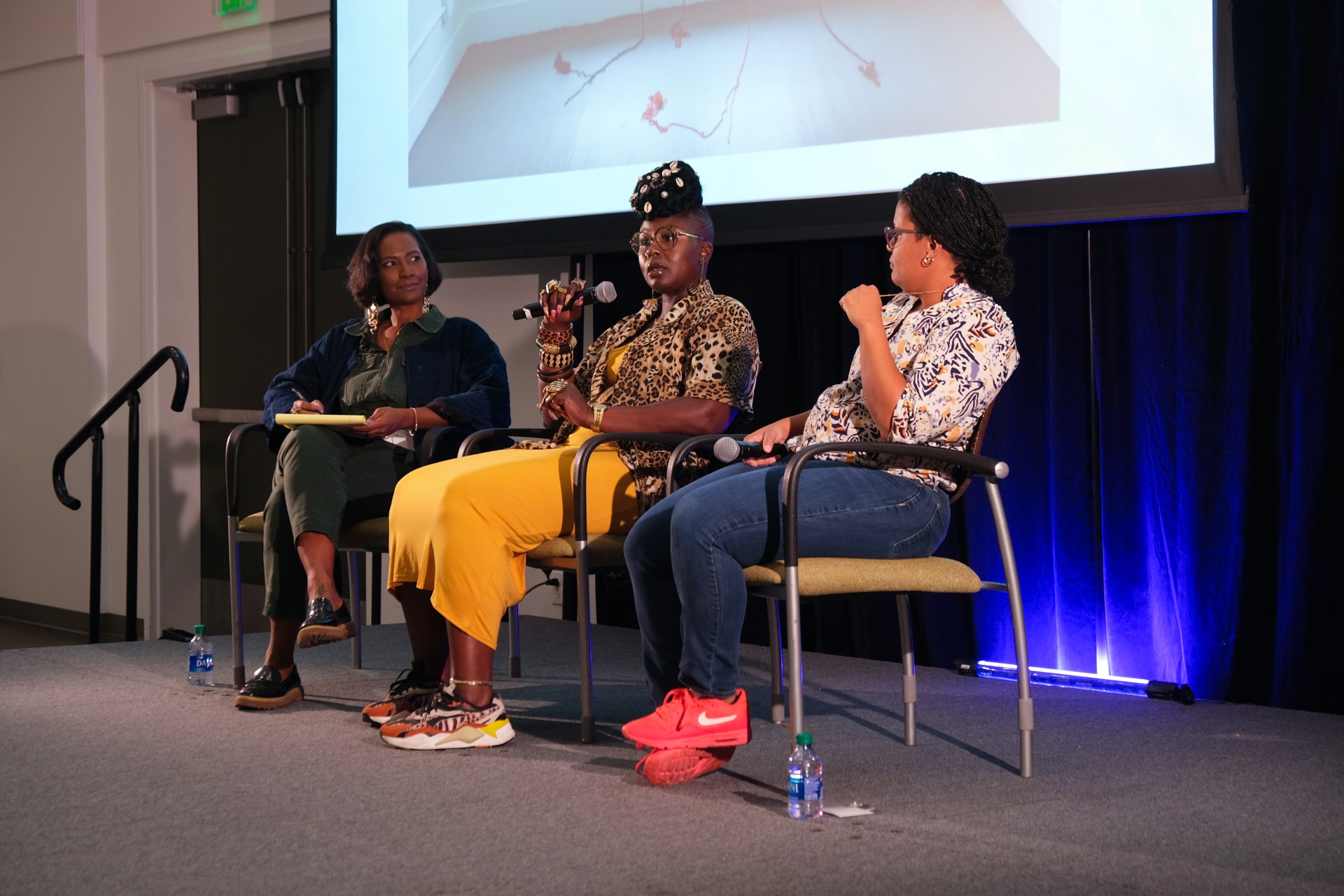To gather is a powerful communal act of making and taking up space. On September 27-30, 2023, The Center for Global Black Studies gathered an intergenerational group of Black Miami visual artists, scholars, arts and museum professionals on the University of Miami’s campus. The gathering, which was all at once retreat, workshop, reunion, and oral history project—exceeded our highest expectations.
One central recurring theme was the extent to which the artists had influenced each other’s practice. Until this occasion, the depth of influence was often unbeknownst to them. On the photography panel, for example, we learned just how much Terence Price II—the youngest artist on the panel, affected the photographic practice of both Lisa Michelle Polissaint and Roscoe Thicke, III in his early work posted on Tumblr and Instagram. And because in this gathering, citations mattered, Price named Noelle Théard in shaping his photographic eye while Polissaint connected Noelle’s transnational role in mentoring the Foto Konbit collective of young photographers in Haiti. While such shared connections were made on the panels, they also came from the audience during the question-and-answer sessions.
Miami as a destination for a Black arts community was another theme expressed. Older artists like Roland Woods, Jr. and Charles Humes, Jr. had sought to make a space for Black artists in this city through the Miami Black Arts Workshop, Kuumba Artists Collective, respectively (1960s-1980s) as well as through Humes’ twenty-year career as a public-school arts educator. From its opening in 1996 to its current iteration, Rosie Gordon Wallace through Diaspora Vibe Cultural Arts Incubator continues to nurture the careers of the city’s young artists returning home from art school. For these elders, their efforts must have been affirmed as they confronted a younger generation of artists who moved to Miami attracted to the city’s reputation as incubating an ecosystem for diverse Black artists and artmaking. Jared McGriff came from the Bay area, while T. Elliot Mansa returned home from New York because his artistic voice mattered here.
Throughout the convening, keen moments of joy were peppered with distinctly Black Miami vernacular expressions of a Black Miami aesthetic.
Our gathering underscored the long history of Black Miami’s visual arts assets in shaping the city’s arts cultures and institutions. Our gathering was also an expression of the value of Black sociality beyond the commodification of the art market.
Our sincerest wish, in response to both artists and community members who have felt unwelcomed on UM’s campus in the past, is to know that we value and welcome you.
From,
The Center for Global Black Studies







